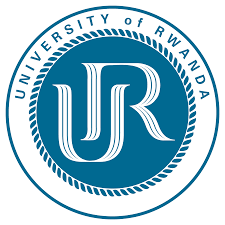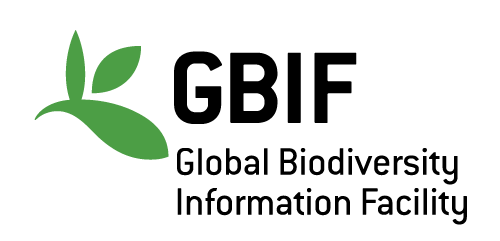
Authors:
J.B. Nduwayezu, C.K. Ruffo, V. Manini, E. Munyaneza, S. Nshutiyayesu and M.B. Thomas
Citation: J.B. Nduwayezu, C.K. Ruffo, V. Manini, E. Munyaneza, S. Nshutiyayesu and M.B. Thomas. 2020. Updated Checklist of Useful Trees and Shrubs for Agricultural and Pastoral Communities of Rwanda. University of Rwanda, Huye, Rwanda. http://www.albertineriftherbaria.net/, accessed yyyy-mm-dd.
Less Details
Locality: Huye, Rwanda
Abstract: This checklist has been prepared as a demonstration of the ability to digitize and make widely available text and data from previous botanical publications for education. The checklist has been updated to follow the most current version of the Angiosperm Phylogeny Group IV and with the purpose of identifying valuable multipurpose trees and shrubs that are suitable for rehabilitating degraded lands and drawing attention to the need for conserving biodiversity. It covers 222 indigenous and introduced taxa belonging to 72 families and 165 genera.
Geography
Rwanda is a land locked and densely populated country (408 persons per km2; annual growth rate of 3.5 %; 78 % rural farmers depending on less than 1 ha) (MINITERE, 2008) covering an area of 26,338 km2 and located between 10 04 and 20 51 longitudes South and between 280 53 and 300 5 latitudes East. It borders with Tanzania to the East, the Democratic Republic of Congo (DRC) to the West, Uganda to the North and Burundi to the South. The altitudes range between 1000 m in the southwest at Bugarama and 4500 m at Kalisimbi volcano in the northwest (Map 1). Rwanda shows a bimodal rainfall pattern with an annual rainfall ranging from 700 mm in lowlands to 2000 mm in highlands and the average temperature ranging between 160 oC and 200 oC. The vegetation and soil types of Rwanda are variable and closely linked.
Vegetation and soil types of Rwanda
Rwanda is characterized with 17 vegetation types of which the main six are the following:
(i) Montane rain forests in the western Province (Cyamudongo, Gishwati, Mukura and Nyungwe) found at 1500-3000 m;
(ii) Degraded submontane forest around Cyamudongo, Gishwati, Mukura and Nyungwe forests found in western Province at 1500-2000 m;
(iii) Grass savannas with Brachiaria platynota and different types of cropland in the central plateau found at 1600-2000 m;
(iv) Low altitude savannas with Themeda triandra and Hyparrhenia filipendula, with zones of Loudetia simplex and xerophyllous forest on the slopes and mesophyllous forest in the valleys found in the eastern and southern provinces (Akagera, Amayaga, Bugesera and Umutara) at an altitude of 1300-1600 m;
(v) Medium and high altitude swamps found at 1300-2500 m and;
(vi) Alpine and subalpine volcanic vegetation found at 3000-4500 m.
These vegetation types however, are very much influenced by various soil types (e.g. soil physical, chemical and biological properties) that are found in different parts of the country, implying therefore, that site-species matching is very crucial if rehabilitation of degraded lands in Rwanda is to be successful. The volcanic soils found in Volcano National Park, for example, bear very luxuriant vegetation because they are richer in soil nutrients than the alluvial soils of Akagera National Park which have poor vegetation types because of their low soil nutrients, moisture and aeration. The soils of Rwanda originate mainly from physical-chemical degradation of schist, quartz, granite and volcanic rocks (MINAGRI, 2008). They can be divided into six major groups as follows:
(i) Soils derived from schist, quartz and sand stone found in Congo Nile crest, part of central plateau and north-eastern highlands
(ii) Soils derived from granite and gneiss in the central plateau and eastern plains
(iii) Soils derived from basic intrusive rocks in the North (iv) Alluvial and colluvial soils of marshlands and valleys which include mineral soils in the eastern valleys and organic soils of Akagera, Nyabarongo and Rugezi valleys
(v) Soils derived from recent volcanic rocks found on foothills of volcanoes
(vi) Soils derived from ancient volcanic rocks found in the North-West of the Country
The long-term rainfall data for the past 96 years (1907-2003) clearly indicate that the observed vegetation types are closely linked with climate. It is apparent from Figures 1-29 that during the pre-and-colonial times the rainfall was higher as compared with that of the post-independence period. This high rainfall is probably attributable to low population density, long fallow periods and respect for forests (i.e sources of food and medicine) while the observed rainfall reduction is mainly caused by intensified pressure on remaining natural forests and food production systems and the breakdown in the culture that the early subsistence models used to exploit and manage natural resources sustainably. Man can improve or degrade the vegetation including forests, in the course of livelihood activities. When such activities result into forest destruction, life is threatened because forests play an important role in human's life.
Geography
Rwanda is a land locked and densely populated country (408 persons per km2; annual growth rate of 3.5 %; 78 % rural farmers depending on less than 1 ha) (MINITERE, 2008) covering an area of 26,338 km2 and located between 10 04 and 20 51 longitudes South and between 280 53 and 300 5 latitudes East. It borders with Tanzania to the East, the Democratic Republic of Congo (DRC) to the West, Uganda to the North and Burundi to the South. The altitudes range between 1000 m in the southwest at Bugarama and 4500 m at Kalisimbi volcano in the northwest (Map 1). Rwanda shows a bimodal rainfall pattern with an annual rainfall ranging from 700 mm in lowlands to 2000 mm in highlands and the average temperature ranging between 160 oC and 200 oC. The vegetation and soil types of Rwanda are variable and closely linked.
Vegetation and soil types of Rwanda
Rwanda is characterized with 17 vegetation types of which the main six are the following:
(i) Montane rain forests in the western Province (Cyamudongo, Gishwati, Mukura and Nyungwe) found at 1500-3000 m;
(ii) Degraded submontane forest around Cyamudongo, Gishwati, Mukura and Nyungwe forests found in western Province at 1500-2000 m;
(iii) Grass savannas with Brachiaria platynota and different types of cropland in the central plateau found at 1600-2000 m;
(iv) Low altitude savannas with Themeda triandra and Hyparrhenia filipendula, with zones of Loudetia simplex and xerophyllous forest on the slopes and mesophyllous forest in the valleys found in the eastern and southern provinces (Akagera, Amayaga, Bugesera and Umutara) at an altitude of 1300-1600 m;
(v) Medium and high altitude swamps found at 1300-2500 m and;
(vi) Alpine and subalpine volcanic vegetation found at 3000-4500 m.
These vegetation types however, are very much influenced by various soil types (e.g. soil physical, chemical and biological properties) that are found in different parts of the country, implying therefore, that site-species matching is very crucial if rehabilitation of degraded lands in Rwanda is to be successful. The volcanic soils found in Volcano National Park, for example, bear very luxuriant vegetation because they are richer in soil nutrients than the alluvial soils of Akagera National Park which have poor vegetation types because of their low soil nutrients, moisture and aeration. The soils of Rwanda originate mainly from physical-chemical degradation of schist, quartz, granite and volcanic rocks (MINAGRI, 2008). They can be divided into six major groups as follows:
(i) Soils derived from schist, quartz and sand stone found in Congo Nile crest, part of central plateau and north-eastern highlands
(ii) Soils derived from granite and gneiss in the central plateau and eastern plains
(iii) Soils derived from basic intrusive rocks in the North (iv) Alluvial and colluvial soils of marshlands and valleys which include mineral soils in the eastern valleys and organic soils of Akagera, Nyabarongo and Rugezi valleys
(v) Soils derived from recent volcanic rocks found on foothills of volcanoes
(vi) Soils derived from ancient volcanic rocks found in the North-West of the Country
The long-term rainfall data for the past 96 years (1907-2003) clearly indicate that the observed vegetation types are closely linked with climate. It is apparent from Figures 1-29 that during the pre-and-colonial times the rainfall was higher as compared with that of the post-independence period. This high rainfall is probably attributable to low population density, long fallow periods and respect for forests (i.e sources of food and medicine) while the observed rainfall reduction is mainly caused by intensified pressure on remaining natural forests and food production systems and the breakdown in the culture that the early subsistence models used to exploit and manage natural resources sustainably. Man can improve or degrade the vegetation including forests, in the course of livelihood activities. When such activities result into forest destruction, life is threatened because forests play an important role in human's life.
Notes: Reference: Nduwayezu, J.B., C.K. Ruffo, V. Manini, E. Munyaneza, S. Nshutiyayesu. 2010. Checklist of Useful Trees and Shrubs for Agricultural and Pastoral Communities of Rwanda. Pallotti Press. Kigali, Rwanda. 264 p.
Families:
69
Genera:
165
Species:
191 (species rank)
Total Taxa:
222 (including subsp. and var.)
Ozoroa insignis Delile - Umukerenke
Annona cherimola Mill. - cherimoya
Annona muricata L. - soursop
Annona senegalensis Pers. - wild custard-apple
Polyscias fulva (Hiern) Harms - umwungo
Jacaranda mimosifolia D.Don - jacaranda
Markhamia lutea (Benth.) K.Schum - umusave
Boscia angustifolia var. corymbosa - Umuzizi
Casuarina equisetifolia L. - ironwood
Terminalia catappa L. - Indian almond
Terminalia mantaly H. Perr. - Madagascar almond
Terminalia superba Engl. & Diels - superb terminalia
Aleurites moluccanus (L.) Willd. - kukui (Hawaiian)
Croton megalocarpus Hutch. - icyarwa (Kin), African Croton
Euphorbia candelabrum Tremaux ex Kotschy - umuduha (Kin)
Ricinus communis L. - Ikibonobono
Entada abyssinica Steud. ex A. Rich. - Abyssinia entada
Leucaena diversifolia (Schltdl.) Benth. - red leucaena
Leucaena leucocephala (Lam.) de Wit - leucaena
Persea americana Mill. - Guatemalan avocado
Abutilon angulatum (Guill & Perr.) Mast. - Umushoshwe
Indigenous, a woody herb of 2-3 m high with purple-red-grey-green young stems, sometimes 3-angled when mature.; G. Troupin 3663 [NHR]
, Luke, WRQ 18443 [NHR]
Ceiba pentandra (L.) Gaertn. - silk cotton tree
Artocarpus heterophyllus Lam. - jackfruit
Ficus sp. L. - fig
Ficus benjamina L. - weeping fig
Ficus elastica Roxb. ex Hornem. - Indian rubber fig
Ficus natalensis Hochst. - Umuvumu
Ficus sycomorus L. - sycamore fig
Ficus thonningii Blume - umuvumu
Moringa oleifera Lam. - horseradishtree
Eucalyptus saligna Sm. - Sydney bluegum
Eugenia uniflora L. - suriname cherry
Psidium guajava L. - kuahpa
Syzygium guineense (Willd.) DC. - umugote
Syzygium jambos (L.) Alston - rose-apple
Pinus patula Schiede ex Schltdl. & Cham. - Mexican weeping pine
Bambusa vulgaris Wendl. Ex Nees - umugano (Kin), common bamboo
Grevillea robusta A.Cunn. ex R.Br. - silk oak
Eriobotrya japonica (Thunb.) Lindl. - loquat
Hagenia abyssinica (Bruce) J.F.Gmel. - Kousso
Citrus aurantifolia (Christm.) Swingle - key lime
Brugmansia suaveolens (Humb. & Bonpl. Ex Willd.) Bercht. & Pers. - angel trumpet
Cyphomandra betacea (Cav.) Sendtn. - tree tomato
Dombeya rotundifolia (Hochst.) Planch. - Umukore
Copyright (c)2020. Data portal development has been supported through the cooperation of Biocultural Diversity International and the National Herbarium of Rwanda (NHR)
at the Center of Excellence in Biodiversity and Natural Resources Management (CoEB).
We are currently actively seeking additional funding for this project.
Powered by Symbiota software with site management and data curation support by Michael B. Thomas, PhD. Usage Policy.




